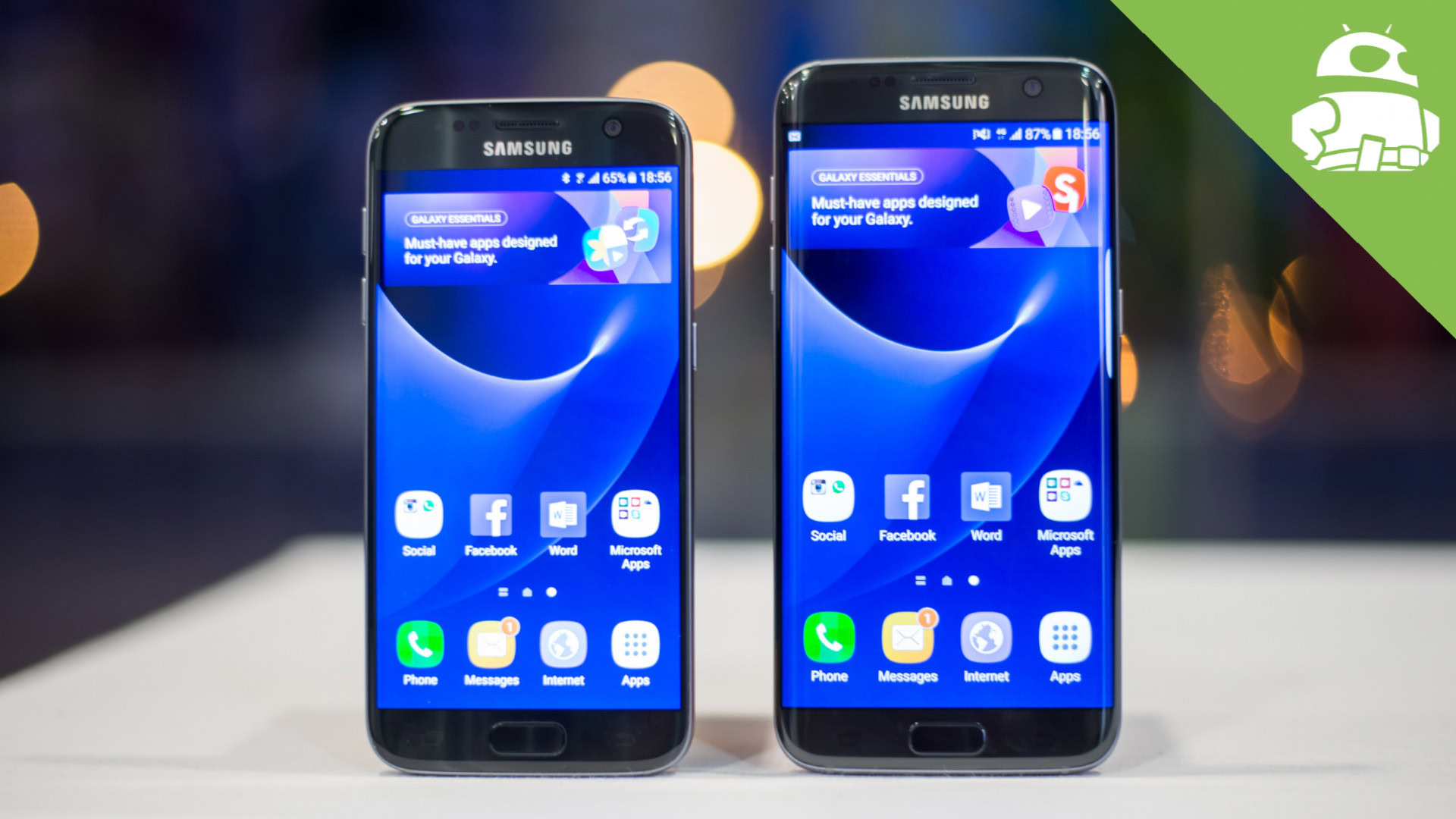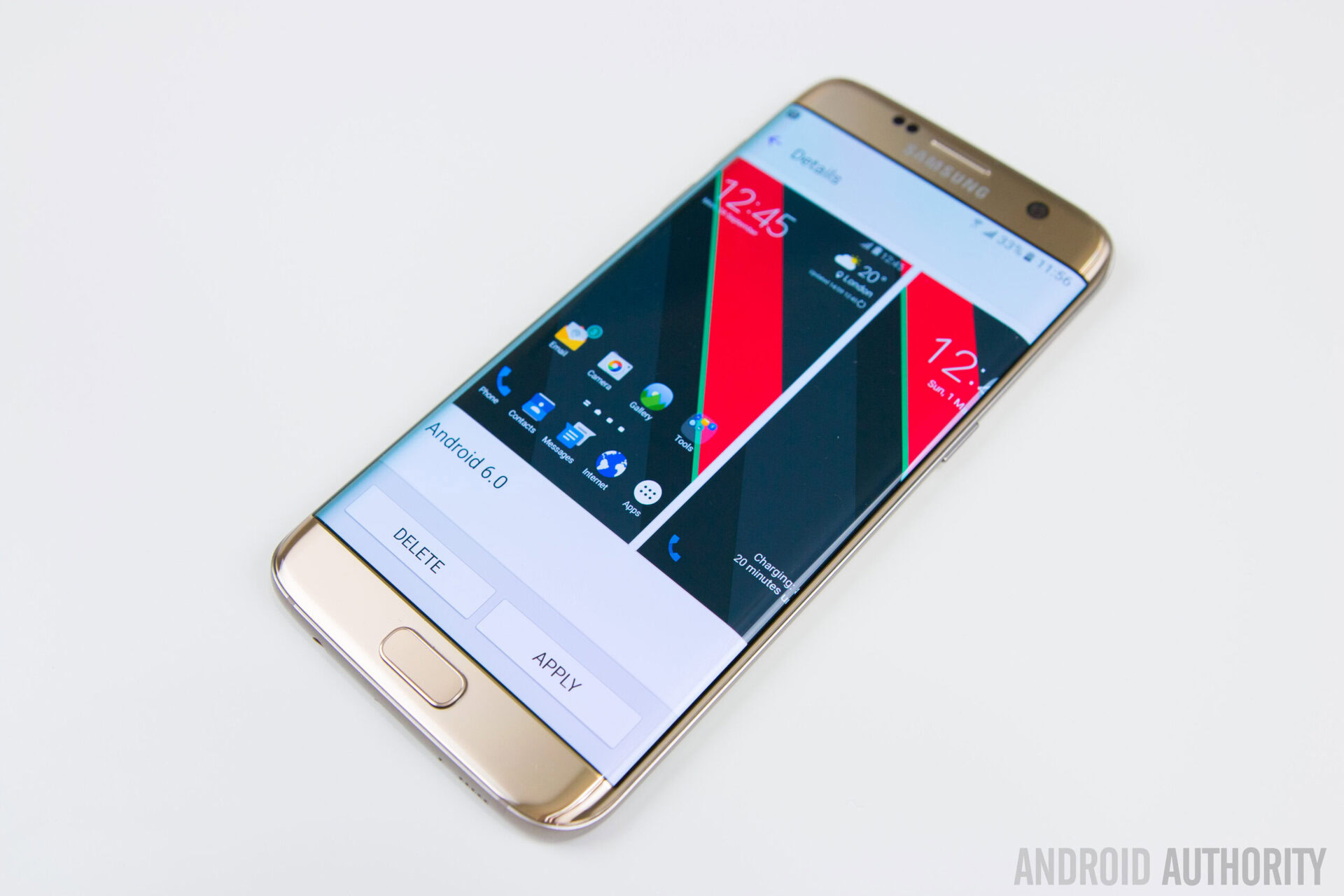Affiliate links on Android Authority may earn us a commission. Learn more.
Samsung Galaxy S7 vs Galaxy S7 Edge hands on comparison
Published onFebruary 21, 2016

Samsung just took the wraps off of their latest flagship offerings, and along with the Galaxy S7 comes an Edge variant, this time with even more features to take advantage of the curved display in tow. With two options available once again, the question remains as to which version of the Galaxy S7 is better suited to you. With their predecessors, we found that choosing between the two basically boiled down to aesthetics, but does the latest Edge device have more to offer over its flagship sibling? We find out, in this quick look at the Samsung Galaxy S7 vs Galaxy S7 Edge!


In terms of design, not much has changed with the latest Samsung flagships when compared to the previous generation, with the current flagships also featuring metal and glass unibody constructions. However, while the design language remains similar, there have been improvements made across the board, that make the Galaxy S7 and Galaxy S7 Edge differentiate themselves from their predecessors.
For starters, both smartphones come with curves along the sides of the back, as seen with the Galaxy Note 5, and along with the more rounded off corners and sides this time around, helps with the handling experience, even more so in the case of the larger Galaxy S7 Edge. With both smartphones, the camera module protrusion on the back isn’t as significant anymore either, which is a big plus.
However, when it comes to the difference between these two smartphones, there isn’t much to be seen, of course, with the exception of the two curved edges of the Galaxy S7 Edge. With the 5.5-inch display, the Galaxy S7 Edge is also the larger of the two, giving users another aspect to consider when making a choice between the two, other than it simply being a case of whether you like the edges or not.
Both devices come with Super AMOLED displays featuring Quad HD resolutions, with the smaller 5.1-inch display of the Galaxy S7 giving it the slight leg up in terms of pixel density, compared to the 5.5-inch screen of its flagship counterpart. Samsung’s display prowess is practically unquestionable at this point, and once again, we get the vibrant and saturated colors, deep inky black, and great viewing angles that we’ve come to expect, from both smartphones.
An interesting addition on the display front with both smartphones is the availability of an Always On display, letting you see the time, your notifications, the calendar, the weather information, and more, with a glance, and without needing to wake the phone. If battery life is a concern, Samsung claims that even with the display always on, the total effect on battery life is less than 1%. It’s features and applications are quite limited at this point, but that is bound to improve over time.
As far as performance is concerned, both phones will be powered by either a Samsung Exynos 8 Octa or a Qualcomm Snapdragon 820 processor, depending on the market. Regardless, all versions are paired with 4GB RAM. In the short time that we got to spend with the device, things have looked to be smooth and snappy throughout, helped along by an even more streamlined software experience.
In hardware, the big news is the return of a couple of key features, namely expandable storage and resistance to dust and water. As far as expandable storage is concerned, the device utilizes the secondary SIM slot as a microSD card slot, leaving users with having to make the choice between expandable storage or dual SIM capabilities. All those that were in an uproar when the feature went away with the Galaxy S6 will certainly appreciate its return. When it comes to fighting the elements, both smartphones come with an IP 68 rating for protection against dust and water.
The Galaxy S7 comes with a large 3,000 mAh battery, but its bigger size allowed for Samsung to pack an even larger 3,600 mAh unit into the Galaxy S7 Edge. Of course, more testing will be required before we can make any conclusions as to the battery life available with these devices, but the good news here is that features like fast wireless charging and quick charging capabilities have been retained.
Both smartphones come with a 12MP rear camera with an f/1.7 aperture lens, and the sensor also sports a larger 1.4µm pixels, which should allow the camera to take in much more light, and make for far better performance in low light conditions. We were unfortunately not able to spend a whole lot of time with either device, but we can’t wait to put these cameras through their paces, and if Samsung’s previous smartphones are any indication, the experience shouldn’t disappoint.
Finally, on the software side of things, you get the latest iteration of TouchWiz on top of Android Marshmallow with both smartphones. Perhaps the biggest change in the software is a new experimental feature, found in the Galaxy Labs section of th Settings menu, that allows you to turn off the app drawer altogether. The app drawer is something that LG has also done away with entirely with the LG G5, but at least the good thing here is that the choice is left to the users.
While the software experience is obviously mostly identical with both, we start to see some separation when it comes to the Edge display capabilities. You still get the People Edge and Apps Edge like before, but there are now two columns, which makes it a lot more useful. New are Tasks Edge and the Edge panel. Tasks Edge, as the name suggests, lets you add shortcuts to specific tasks, like adding a calendar event, composing a text message, and other activities that you would normally do regularly. The Edge panel, on the other hand, is basically a slew of customizable widgets that you can pick and choose between, such as stocks, Yahoo news, Calendar, or Weather, to quickly give you information at a glance.
So there you have it for this quick look at the Samsung Galaxy S7 vs Galaxy S7 Edge! A design that has been further refined, the return of key features, and even more streamlined software experience define Samsung’s latest flagship offerings, but the great news here is that it isn’t only aesthetics that are separating the two this time around. Of course, looks do play a significant part in the decision, but the larger display of the Galaxy S7 Edge, and the additional features of the edge display will likely make this edge variant of the flagship more compelling that it ever was before.